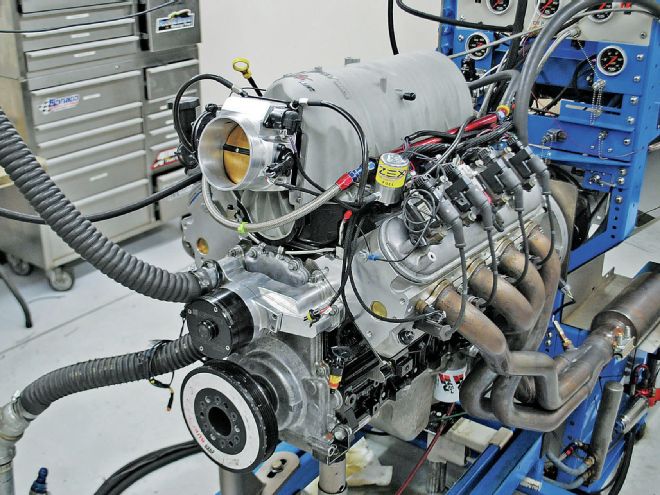
The Chevy performance world is all about power, but it is also about individuality. Chevrolet’s most popular performance cars were typically built by the tens of thousands, so we want one that has a unique combination or colors or options. The same thing holds true with our powerplants. When it comes to performance in 2015, people are flocking to the dominant LS engine family.
That makes it really hard to stand out in the performance car crowd. At the SEMA show last November, this was so true that nearly every car or truck had an LS powerplant, including a Saab from the ’60s and a Plum Crazy ’70 Challenger! Certainly cool and powerful, the abundance of LS engines makes us wonder what it takes to make yours just a little different than all the rest. As luck would have it, there are many ways to make power with an LS, and in the spirit of originality, we decided to demonstrate four different combinations that produce a potent, yet streetable, 600 hp.
All Motor 6.2L LS3 Engine
Short-Block: Chevrolet Performance LS3 crate engine, flat-top pistons (no valve reliefs)
Heads: Trick Flow Specialties Gen X 255 LS3 with dual valvesprings (flow 380 cfm)
Cam: Stock BTR/Comp (0.624/0.590 lift, 232/248 duration, 114 LSA) and three-bolt gear
Rockers: Stock Offset LS3
Intake: Speedmaster LS3 Individual Runner
EFI Management: Holley HP
Exhaust: 1 7/8-inch Kooks headers
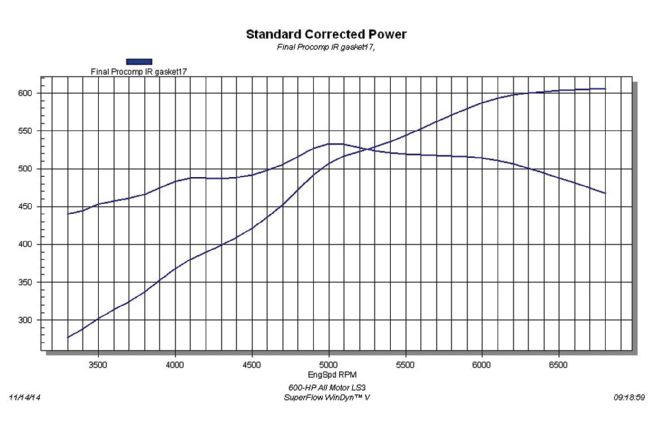 Despite the lack of boost or nitrous, this all-motor LS3 exceeded 600 hp using a stock short-block and relatively mild cam. The cam timing was limited by the available piston-to-valve clearance with the stock flat-top pistons (no valve reliefs). Adding the BTR cam, TFS Gen X heads, and Speedmaster IR intake allowed the engine to rev cleanly to 6,800 rpm, producing peak numbers of 605 hp at 6,800 rpm and 533 lb-ft at 5,000 rpm. With aftermarket pistons to accept wilder cam timing, this 6.2L could really take advantage of the airflow available from the TFS Gen X 255 heads.
Despite the lack of boost or nitrous, this all-motor LS3 exceeded 600 hp using a stock short-block and relatively mild cam. The cam timing was limited by the available piston-to-valve clearance with the stock flat-top pistons (no valve reliefs). Adding the BTR cam, TFS Gen X heads, and Speedmaster IR intake allowed the engine to rev cleanly to 6,800 rpm, producing peak numbers of 605 hp at 6,800 rpm and 533 lb-ft at 5,000 rpm. With aftermarket pistons to accept wilder cam timing, this 6.2L could really take advantage of the airflow available from the TFS Gen X 255 heads.
Turbo 5.3L LM7 Engine Specs:
Short-Block: Stock 5.3L LM7 Motor-Factory Dished Pistons (no valve reliefs)
Heads: Stock 706 LM7 (ARP head studs & Fel-Pro MLS gaskets)
Cam: Stock 5.3L LM7
Rockers: Stock 5.3L LM7
Intake: Stock 5.3L LM7 (Manual Accufab TB)
EFI Management: Holley HP
Turbo System: HP Performance Single
Turbo: Precision Turbo 67 mm
Wastegate: TiAL
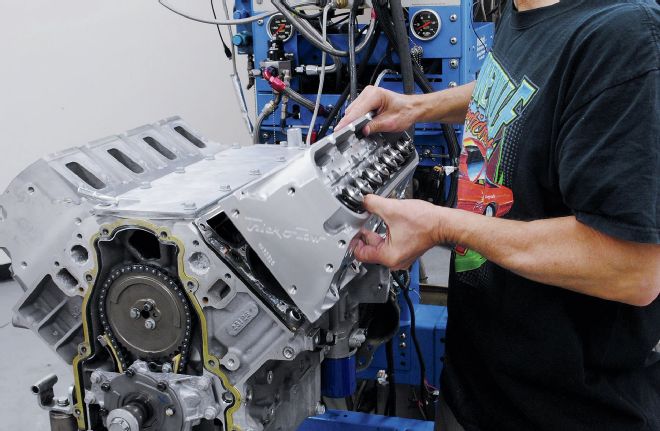 This combination illustrated that even a bone-stock 5.3 can make serious power with a turbo. Ideally we would like to see a top-end upgrade with heads, cam, and intake, but even equipped with the wimpy stock 5.3L cam, stock heads, and intake, this turbo LM7 thumped out some power. Set up to produce just 8 psi, the 5.3L produced 510 hp and 521 lb-ft of torque with no intercooler. We then stepped things up to 11.3 psi with the air-to-air intercooler and were rewarded with 608 hp and 641 lb-ft of torque. Note that the stock, naturally aspirated 5.3L produced 365 hp, then the Precision turbo elevated the entire curve with each successive increase in boost. The presence of 650 lb-ft of torque indicates that even the little 5.3L becomes a serious player with a some boost.
This combination illustrated that even a bone-stock 5.3 can make serious power with a turbo. Ideally we would like to see a top-end upgrade with heads, cam, and intake, but even equipped with the wimpy stock 5.3L cam, stock heads, and intake, this turbo LM7 thumped out some power. Set up to produce just 8 psi, the 5.3L produced 510 hp and 521 lb-ft of torque with no intercooler. We then stepped things up to 11.3 psi with the air-to-air intercooler and were rewarded with 608 hp and 641 lb-ft of torque. Note that the stock, naturally aspirated 5.3L produced 365 hp, then the Precision turbo elevated the entire curve with each successive increase in boost. The presence of 650 lb-ft of torque indicates that even the little 5.3L becomes a serious player with a some boost.
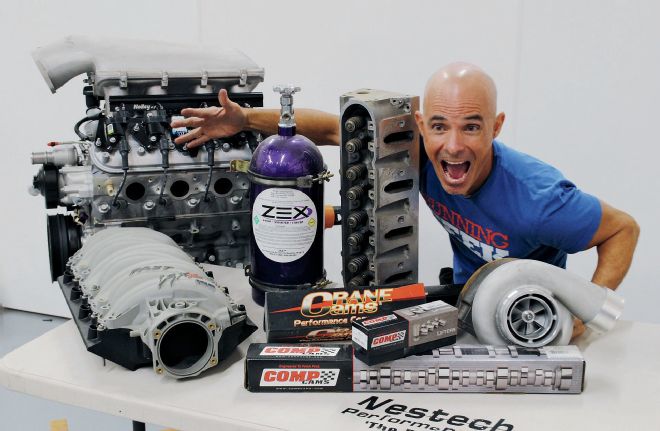
01. How much do we love bolt-ons? This much!
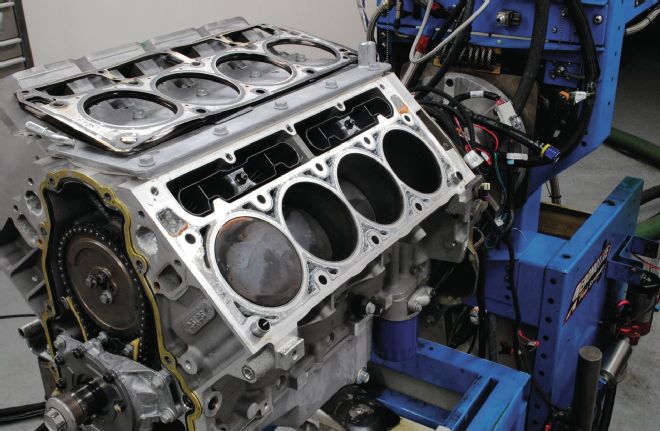
02. The all-motor combination started life as a Chevrolet Performance LS3 crate engine from Gandrud Chevrolet. Off came the stock heads, cam, and intake to make way for the upgrades.
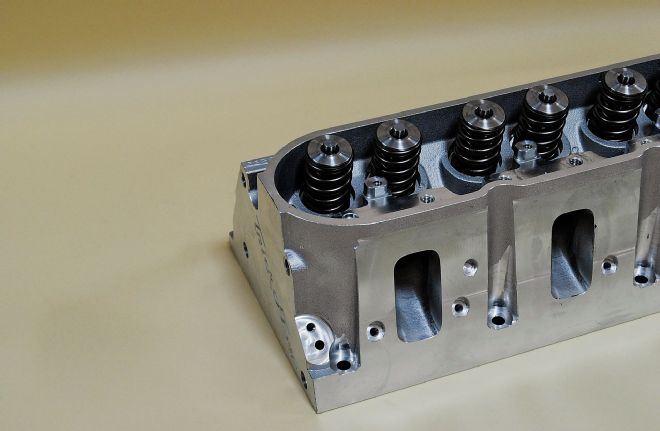
03. The first step was to replace the factory LS3 heads with something that would support significantly more power. These Trick Flow Specialties Gen X 255 LS3 heads flowed nearly 380 cfm.

04. The Gen X 255 heads were installed using MLS head gaskets and ARP head studs. Eagle-eyed readers will also note that we have replaced the factory single-bolt cam and gear with a Brian Tooley Racing cam (0.624/0.590-inch lift, 232/248-degree duration, 114 LSA) and three-bolt gear.
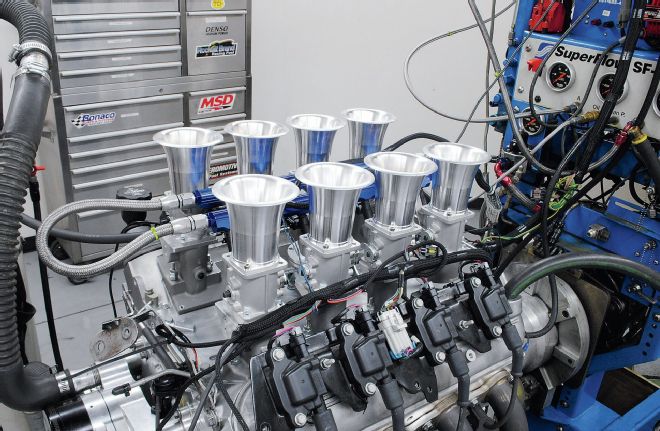
05. The factory LS3 intake was replaced with this Speedmaster IR intake. Full radiused air horns ensured plenty of flow and power.
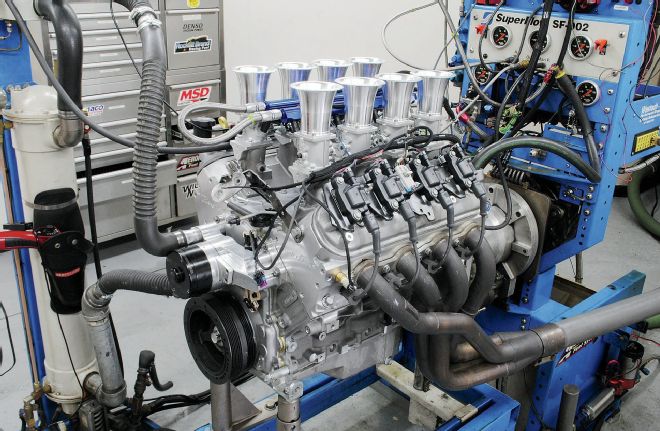
06. The TFS Gen X heads, Brian Tooley cam, and IR intake combined to exceed 600 hp with peak readings of 605 hp at 6,700 rpm and 533 lb-ft at 5,000 rpm.
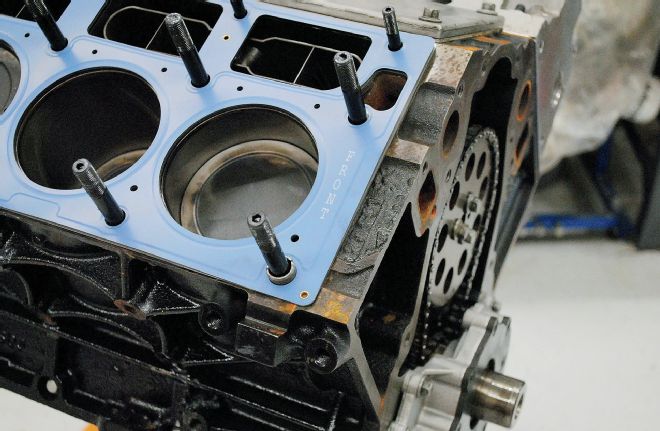
07. The stock 5.3L bottom end of our turbo combination was beefed up slightly with new Fel-Pro MLS head gaskets and ARP head studs.
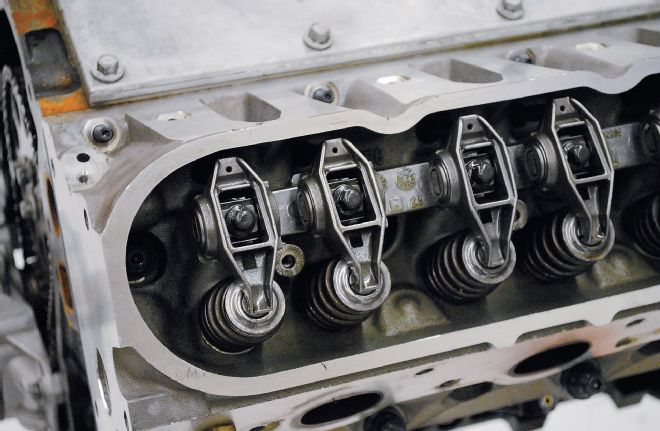
08. The 706 stock heads received no attention, relying on the factory valvesprings, pushrods, and rocker arms.
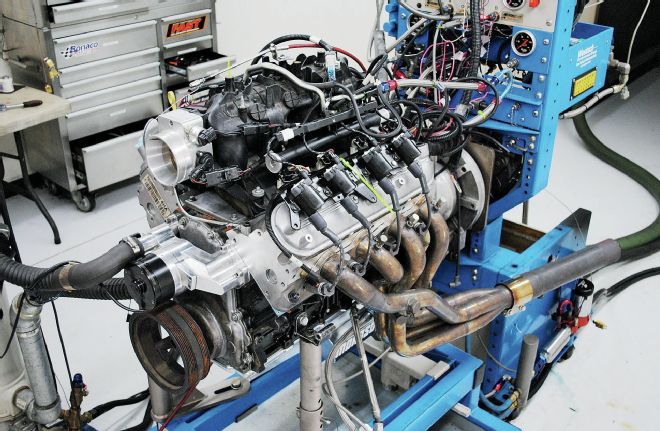
09. Prior to installation of the turbo kit, the 170,000-mile 5.3L was run on the dyno in naturally aspirated trim to ensure it was a healthy candidate. The NA 5.3L produced 355 hp and 381 lb-ft of torque.
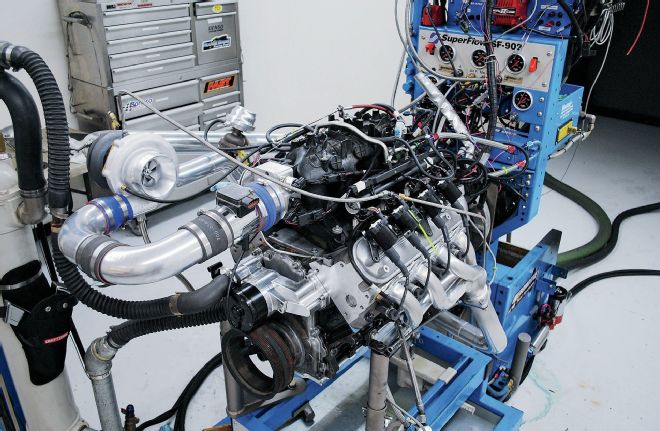
10. The single turbo kit from HP Performance (no longer in business) was first run with no intercooler at 8 psi to the tune of 510 hp and 521 lb-ft of torque, but we were just getting started with this engine.
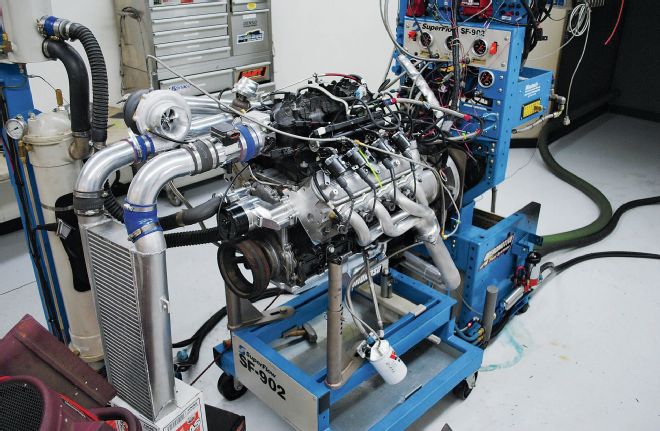
11. After the installation of the intercooler, we cranked up the boost to 11.3 psi where the turbo 5.3L produced 608 hp and 641 lb-ft of torque.
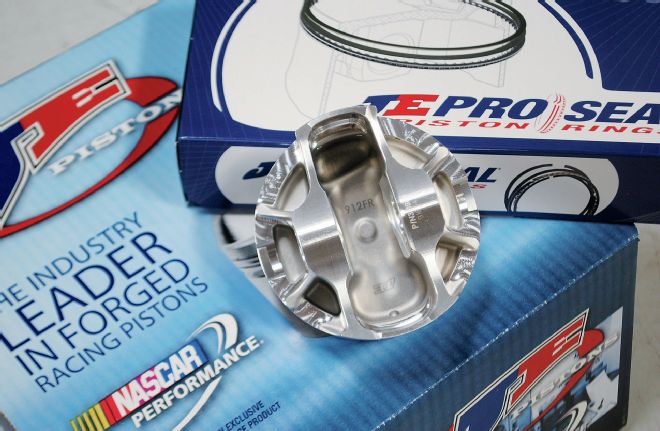
12. The nitrous-injected 600hp 383 started out with a set of JE asymmetric forged pistons.
Nitrous-Injected 383 Stroker Specs:
Short-Block: 5.3L block, JE forged pistons, K1 6.125-inch rods, Scat 4.0-inch crank
Heads: Total Engine Airflow CNC 706 LM7 (ARP head studs & Fel-Pro MLS gaskets)
Cam: Crane hydraulic roller (0.590 lift, 224/232 duration split, 115 LSA)
Rockers: Stock 5.3L LM7
Intake: FAST LSXRT & Big Mouth 102mm throttle body
EFI Management: Holley HP
Nitrous System: Zex Perimeter Plate
Jetting: 100 hp
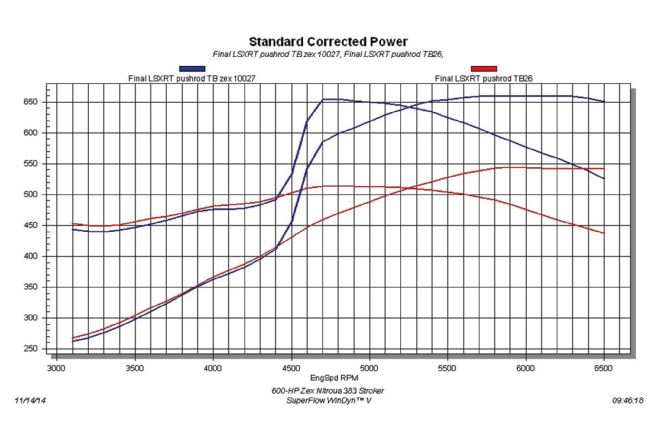 In terms of bang for the buck, notthing compares to nitrous, but this test illustrated that it is a lot easier to exceed 600 hp when you start with a serious testbed. Since nitrous adds a given amount of power based on the jetting, the starting point will all but determine the finishing point. If we start with an engine that makes 400 hp, we need to add 200 hp worth of nitrous to reach 600 hp. If, on the other hand, we start with a 383 stroker that already makes 540 hp, reaching 600 hp is pretty simple. The 383 stroker included internals from Scat, JE, and K1, along with a Crane cam, TEA-ported 5.3L heads and a FAST LSXRT intake. After producing 543 hp on the engine alone, we added the Zex Perimeter Plate system with a 100hp shot and the power jumped to 660 hp and 650 lb-ft of torque.
In terms of bang for the buck, notthing compares to nitrous, but this test illustrated that it is a lot easier to exceed 600 hp when you start with a serious testbed. Since nitrous adds a given amount of power based on the jetting, the starting point will all but determine the finishing point. If we start with an engine that makes 400 hp, we need to add 200 hp worth of nitrous to reach 600 hp. If, on the other hand, we start with a 383 stroker that already makes 540 hp, reaching 600 hp is pretty simple. The 383 stroker included internals from Scat, JE, and K1, along with a Crane cam, TEA-ported 5.3L heads and a FAST LSXRT intake. After producing 543 hp on the engine alone, we added the Zex Perimeter Plate system with a 100hp shot and the power jumped to 660 hp and 650 lb-ft of torque.
Supercharged 6.2L LS3 Engine Specs
Short-Block: Stock LS3, JE dished pistons, K1 rods
Heads: Stock LS3 (ARP head studs & Fel-Pro MLS gaskets)
Cam: Stock 6.2L LS3
Rockers: Stock 6.2L LS3
Intake: Kenne Bell Blower Manifold
EFI Management: Holley HP
Supercharger: Kenne Bell Twin Screw
Supercharger Size: 3.6L
Boost Level: 9 psi
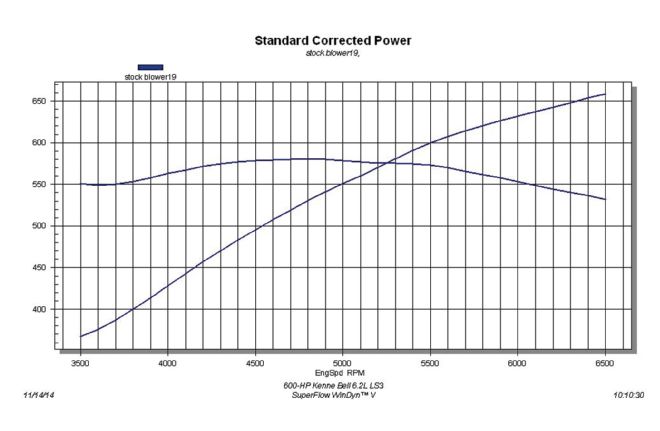 All the things we like about a naturally aspirated Chevrolet Performance LS3 crate engine, we love about a supercharged one. Before adding the Kenne Bell supercharger to the LS3, we elected to change the pistons and rods to both drop the static compression and provide the necessary valve reliefs for future cam upgrades. The forged JE pistons and K1 rods allowed us to safely crank up the boost, though the 3.6L Kenne Bell supercharger was just getting started at 9 psi. Run at this low boost level, the intercooled, twin-screw system produced 659 hp at 6,500 rpm and 580 lb-ft at 4,900 rpm, but the curve was still climbing rapidly at our self-imposed shut-off point. The smaller 2.8L blower (or new 3.2L) would be better suited for this low-boost application, but we eventually took this combination over 1,000 hp with the 3.6L Kenne Bell.
All the things we like about a naturally aspirated Chevrolet Performance LS3 crate engine, we love about a supercharged one. Before adding the Kenne Bell supercharger to the LS3, we elected to change the pistons and rods to both drop the static compression and provide the necessary valve reliefs for future cam upgrades. The forged JE pistons and K1 rods allowed us to safely crank up the boost, though the 3.6L Kenne Bell supercharger was just getting started at 9 psi. Run at this low boost level, the intercooled, twin-screw system produced 659 hp at 6,500 rpm and 580 lb-ft at 4,900 rpm, but the curve was still climbing rapidly at our self-imposed shut-off point. The smaller 2.8L blower (or new 3.2L) would be better suited for this low-boost application, but we eventually took this combination over 1,000 hp with the 3.6L Kenne Bell.
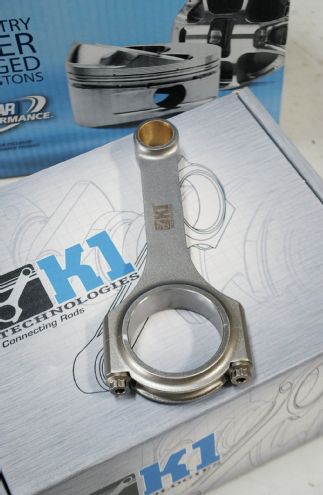
13. The pistons were combined with a set of 6.125-inch forged rods from K1.
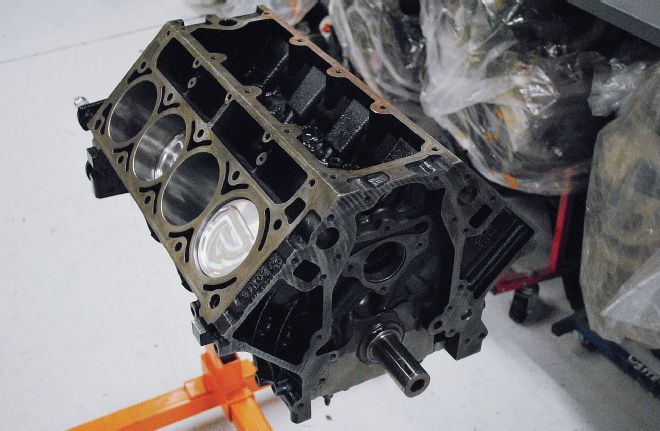
14. The JE pistons and K1 rods were combined with a Scat forged 4.0-inch crank to produce a 383 stroker.
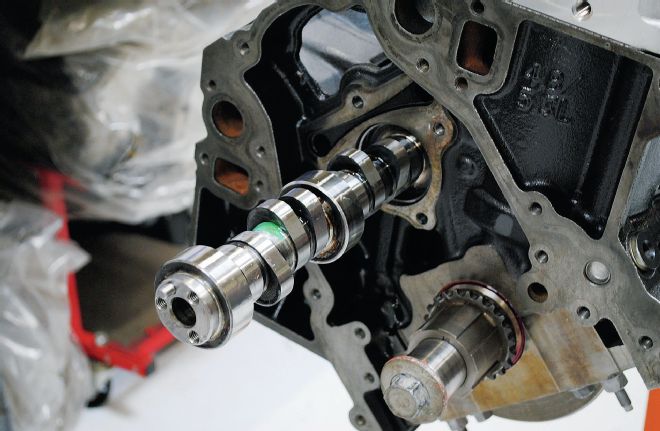
15. Crane Cams supplied the hydraulic roller profile. With 0.590-inch lift, a 224/232-degree duration split, and 115-degree LSA, the Crane cam was a touch on the mild side of a 383.
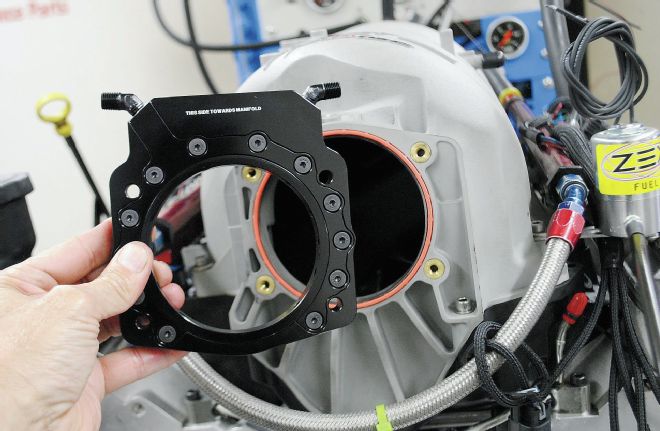
16. The 383 was finished up with TEA-ported 5.3L heads and a FAST LSXRT intake before adding the Zex Perimeter Plate nitrous system.
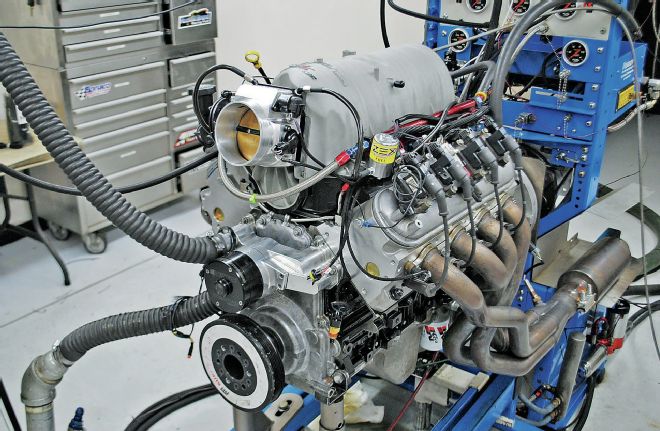
17. On the dyno, the nitrous-injected 383 produced 660 hp and 655 lb-ft of torque with a 100hp shot of juice.
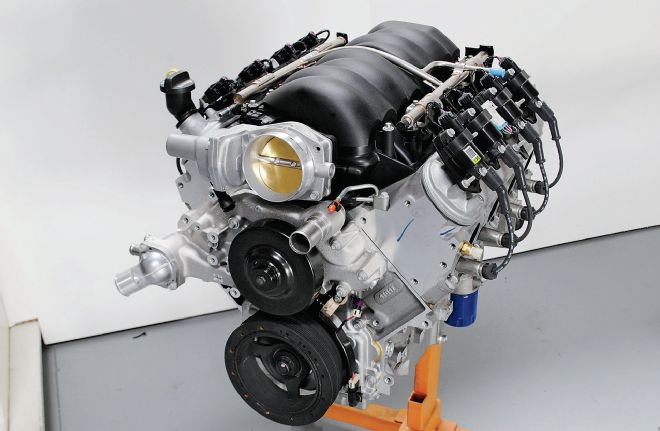
18. It was the easy way out, but the 600hp blower combo started out life as a simple LS3 crate engine. For this test, the combination retained the stock LS3 heads and cam.
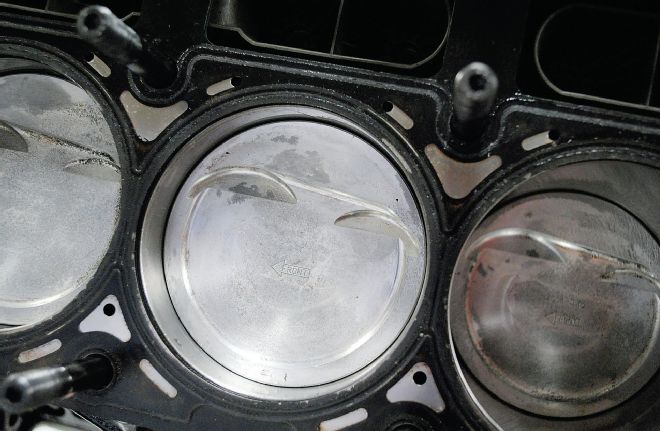
19. The aluminum 6.2L was actually detuned for blower use by adding a set of forged, dished JE pistons to drop the static compression ratio. This combination eventually exceeded 1,000 hp, but at low boost was the perfect street engine.
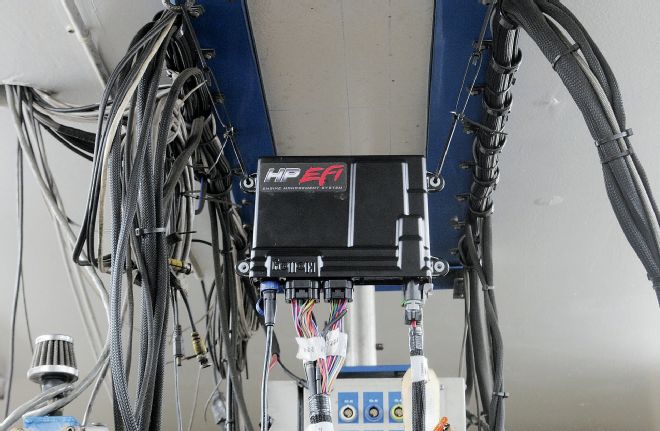
20. The supercharged LS3 was tuned to perfection using a Holley HP EFI management system.
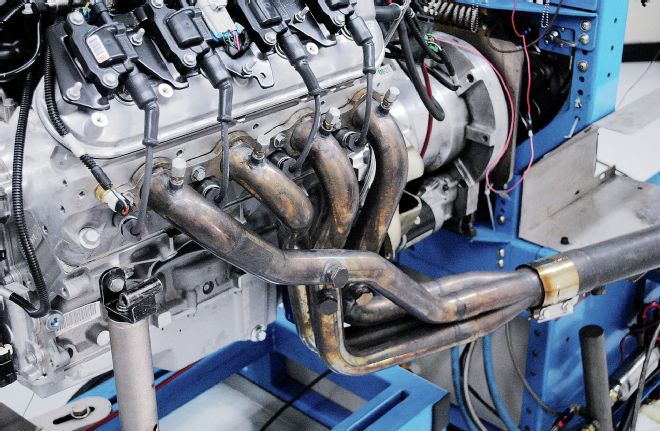
21. Spent gases exited through a set of 1 3/4-inch long-tube headers. Note the individual oxygen sensor bungs and EGT ports.
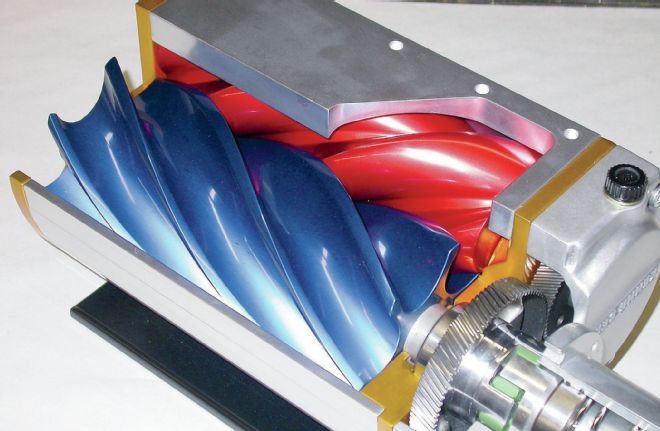
22. Boosting the stock LS3 was a Kenne Bell 3.6L twin-screw supercharger.
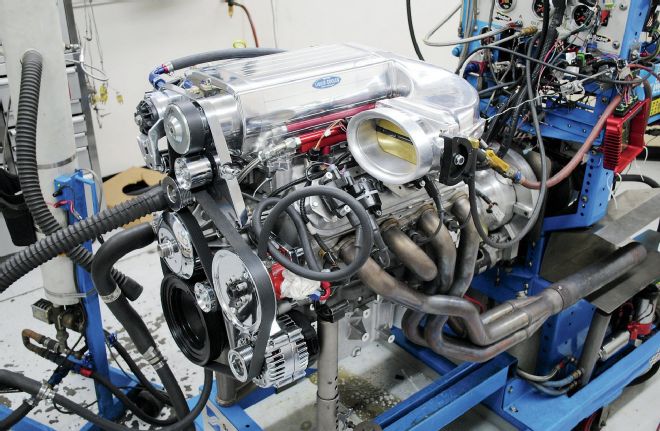
23. Oversized for this mild application, the Kenne Bell supercharged LS3 produced almost 650 hp at less than 9 psi. The low-boost combo was better suited to the smaller 2.8L blower, but we eventually cranked this engine up into four-digit territory.